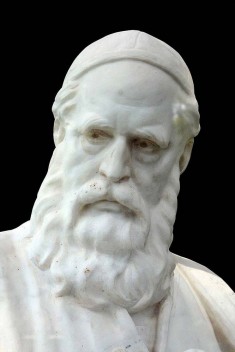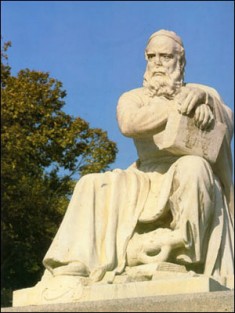| Omar Khayyam | |
|---|---|
 |
|
| Mathematician | |
| Born | May 18, 1048 Nishapur, Khorasan |
| Died | December 4, 1131 (around age 82-83) |
| Nationality | Persian |
Born on May 18, 1048, in Nishapur, the Khorasan province, Persia, Omar Khayyam was a prominent and influential Persian mathematician, astronomer, poet and philosopher whose major works had a tremendous impact on scholars in English-speaking countries even centuries later.
Khayyam’s Early Life
Born with a full name of Ghiyath ad-Din Abu l-Fath Umar ibn Ibrahim al-Khayyam Nishapuri, he studied philosophy and sciences in his native town with one of the most respected teachers in the Khorasan province, Imam Mowaffaq Nishapuri. Since his name – al-Khayyam – is translated as “tent-maker,” it is believed that this may have been his father’s trade.
Kyayyam wrote a book on algebra when he was in his 20s. In 1070, he moved to one of the oldest cities in Central Asia, Samarkand where he wrote his famous algebra treatise that influenced English mathematician John Wallis. The hard-working polymath taught algebra and philosophy by day, advised the Seljuq sultan, Malik Shah I, in the evening and studied astronomy by night at the newly built Observatory in Esfahan.
He compiled numerous astronomical tables and created the Jalali calendar which was adopted in 1075 by Malik Shah I as the official calendar in Persia. After the assassination of the sultan in 1092, he set out on a pilgrimage to Medina and Mecca. He was eventually allowed to return to Nishapur by Malik Shah’s third son (who became the overall ruler of the Seljuq dynasty in 1118). He continued to teach mathematics, philosophy, and astronomy here and to serve the Seljuq court as an astrologer until his death.
Contributions to Mathematics
Khayyam’s monumental work – Treatise on Demonstration of Problems of Algebra, written in 1070 when he was only 22 years old, contains the principles of algebra which were eventually assimilated by the Western world of mathematics, in particular his groundbreaking systematic methods of solving cubic equations by intersecting conic sections.
 In his famous treatise, he discussed what is today known as Pascal’s triangle, a triangular array of the binomial coefficients. In geometry, he contributed to the theory of proportions and in algebra he proved the existence of equations with two solutions. Omar Khayyam also made a major contribution to the development of non-Euclidean geometry and especially the parallel postulate.
In his famous treatise, he discussed what is today known as Pascal’s triangle, a triangular array of the binomial coefficients. In geometry, he contributed to the theory of proportions and in algebra he proved the existence of equations with two solutions. Omar Khayyam also made a major contribution to the development of non-Euclidean geometry and especially the parallel postulate.
In 1077, he wrote a three-section book entitled Explanations of the Difficulties in the Postulates in Euclid s Elements, in which he proved properties of figures in non-Euclidean geometry and included the multiplication ratios.
Although he never aimed at proving the parallels axiom, he contributed accidentally to the development of non-Euclidean geometry in his attempt to derive the postulate from an equivalent one that he had formulated based on Aristotle’s principles. Due to the fact that he associated motion with the world of matter, he refused to bring motion into the attempt to prove the parallel postulate. Many historians also credit the renowned Persian mathematician for having a general binomial theorem, based on his work involving the extraction of roots.
In addition to his outstanding achievements in geometric algebra, Khayyam was also the first mathematician to consider what is today known as the Khayyam-Saccheri quadrilateral, which is a quadrilateral with two equal sides that are perpendicular to the base. Touted “the philosopher of the world” by medieval scholar Al-Zamakhshari, Khayyam also contributed to the philosophy of mathematics in the context of Persian mathematics and philosophy; he discussed concepts such as mathematical order, the distinction between natural and mathematical bodies and the importance of axioms in geometry.
Death and Legacy
Omar Khayyam passed away at the age of 83 on December 4, 1131, in Nishapur, Khorasan and his body was buried in the famous Khayyam Garden at Imamzadeh Mahruq’s mausoleum. His very own mausoleum, completed in 1963 by Hooshang Seyhoun, is a masterpiece of Iranian architecture and a very popular tourist attraction in present-day Iran.
The famous Islamic polymath made a significant contribution to calendar reform, heliocentric theory, and he pioneered in mathematics a geometrical method of solving cubic equations by intersecting a parabola with a circle. He achieved fame in Persia during his time particularly as an astronomer, but he is mostly known in the Western world for his poetic writings, thanks to English poet Edwards FitzGerald’s translation and adaptation of his quatrains which he collected in The Rubaiyat of Omar Khayyam, which was published in the late 19th century.